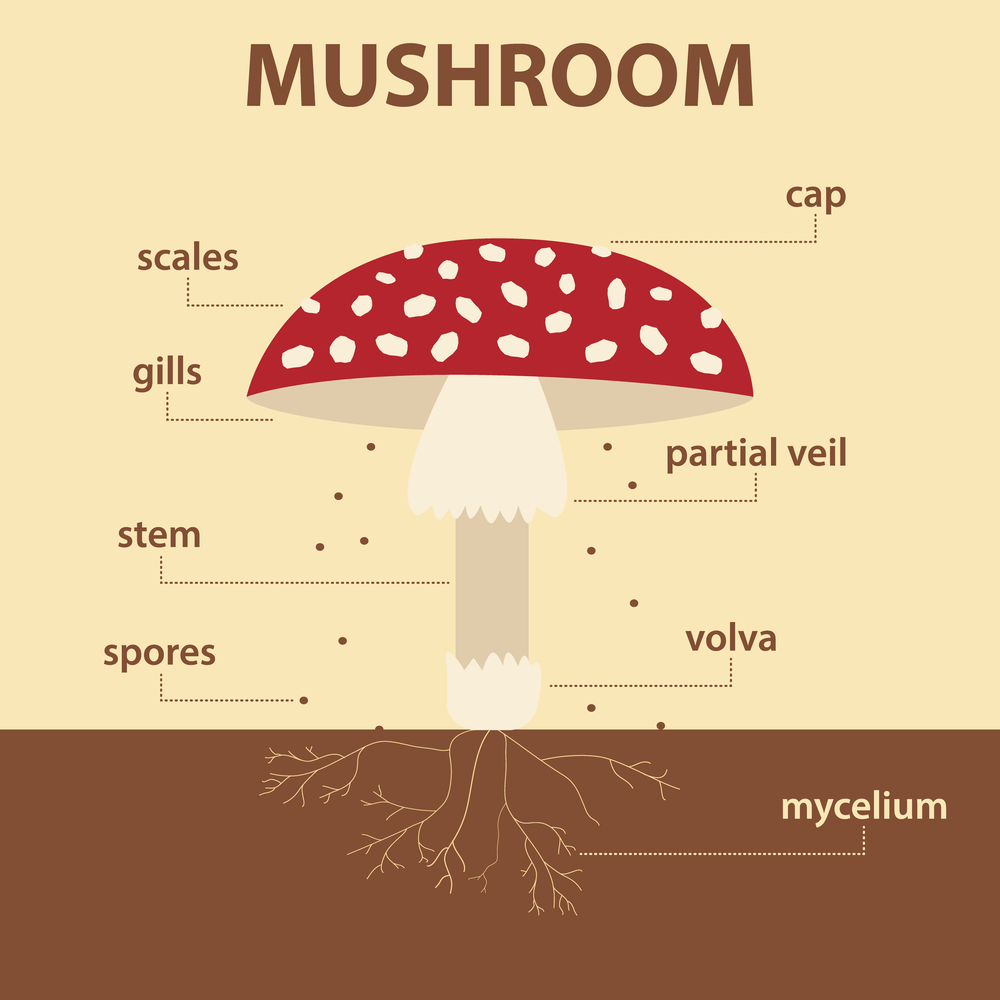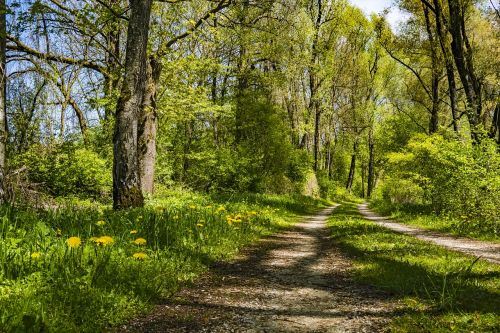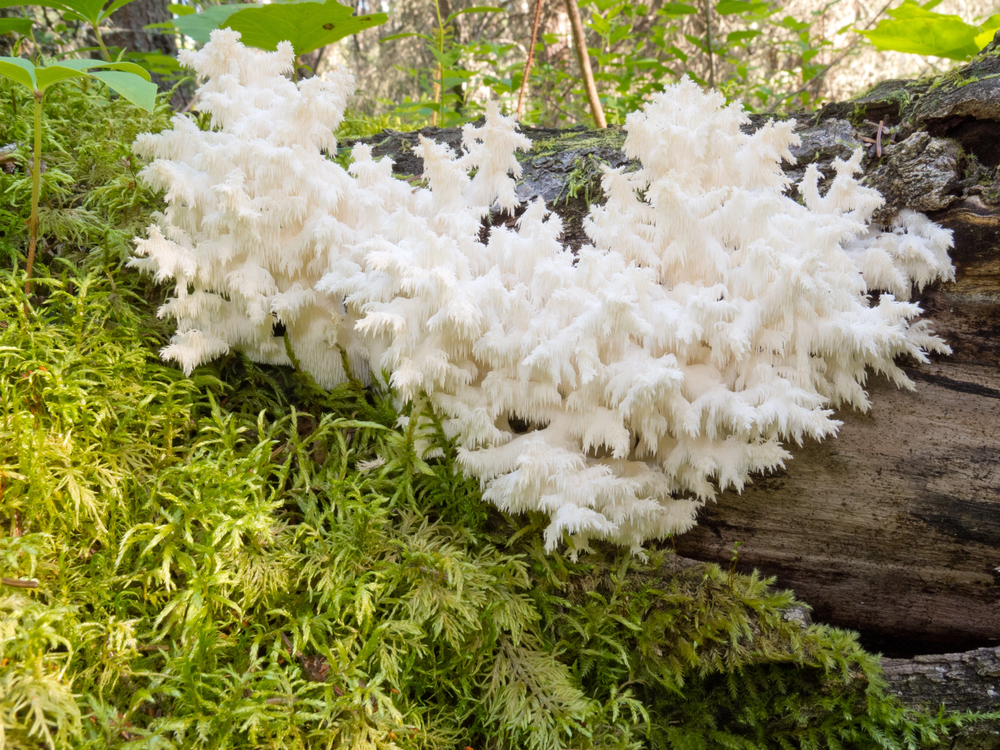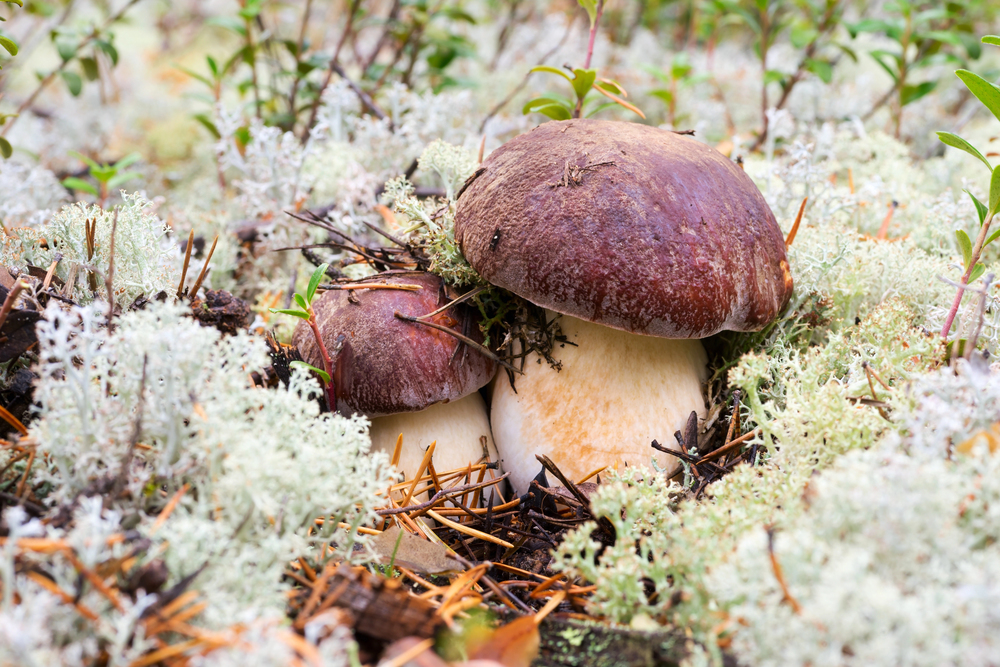Mushrooms, with their mysterious presence in forests and fields, represent one of nature’s most fascinating life forms. While these organisms may appear simple at first glance, their anatomical structure reveals a complex system perfected through millions of years of evolution. From the visible cap that crowns their presence to the invisible network of threads beneath our feet, each component serves a vital purpose in the mushroom’s survival and reproduction. Understanding these basic elements not only aids in proper identification but additionally unveils the remarkable engineering that allows fungi to thrive in diverse ecosystems worldwide.
Key Takeaways
- A mushroom’s main parts include the cap (pileus), stem (stipe), gills (lamellae), and mycelium network underground.
- The cap protects the mushroom and helps disperse spores, while gills underneath produce and release spores.
- The stem provides support and transports nutrients, often featuring identifying marks like rings or patterns.
- Mycelium consists of thread-like hyphae that form underground networks connecting fungi to plants and trees.
- Protective veils cover young mushrooms, leaving remnants that help identify species when mature.
The Main Parts of Mushrooms
A mushroom’s anatomy consists of several distinct and significant components that work together to support its growth and reproduction. At the top, the cap (pileus) serves as a protective umbrella-like structure that shields the reproductive elements beneath, while likewise playing a vital role in spore dispersal. These blade-like structures are crucial sites for spore production and help ensure species survival through efficient dispersal mechanisms.
The underside of the cap features either gills (lamellae) or pores, which are fundamental structures for spore production and release. These reproductive components can vary significantly between species, with some mushrooms displaying blade-like gills while others develop intricate pore systems.
Supporting the entire structure is the stem (stipe), which anchors the mushroom and aids in the transport of water and nutrients. The stem’s characteristics, including its length, width, and texture, often serve as key identifying features for different mushroom species.
Many mushrooms likewise possess additional identifying features, such as a ring or skirt on the stem, a cup-shaped volva at the base, or a distinctive reticulated pattern along the stipe. These components, combined with the basal bulb that connects to the underground mycelium network, complete the mushroom’s basic structure.

Understanding the Mysterious Mycelium Network
Beneath the visible mushrooms we see above ground lies an intricate network of thread-like structures called mycelium, which forms the foundation of all fungal life. These microscopic threads, known as hyphae, branch out extensively through soil and organic matter to create vast underground webs that can span hundreds of acres. The mycelium network grows in distinct patterns, including rhizomorphic (rope-like) and tomentose (cotton-like) formations, which allow fungi to efficiently investigate and colonize their environment while absorbing vital nutrients through their cell walls. These remarkable networks serve as nature’s immune system, producing antibiotics that help defend against harmful microorganisms in the ecosystem.
Underground Fungal Web Basics
Deep within the soil lies one of nature’s most intricate living networks: the mycelium. This remarkable underground system consists of countless thread-like structures called hyphae, which branch out to form extensive webs throughout the soil. The hyphae grow and connect, creating complex pathways that can span vast distances beneath our feet.
The mycelium network serves multiple critical functions in forest ecosystems. Through specialized structures, it allows the transport of water, nutrients, and other vital molecules between plants and fungi. The network additionally promotes vital communication between trees, allowing them to share resources and send warning signals about potential threats. Research shows that through these networks, up to 40% of carbon found in tree roots comes from neighboring trees.
The mycelium structure features individual hyphae separated by septa containing pores, which regulate the movement of materials throughout the network. These microscopic channels form the basis of an intelligent system that can adapt its growth patterns based on available resources and environmental conditions.
The network’s remarkable resilience allows it to maintain ecosystem balance through nutrient recycling and symbiotic relationships with plants, particularly through mycorrhizal connections that support both mature trees and developing seedlings.
Mycelium’s Secret Growth Patterns
Through intricate biological processes, mycelium networks develop according to sophisticated growth patterns that optimize their expansion and resource utilization. These fungal networks grow through two primary mechanisms: apical growth at hyphal tips and lateral branching, which creates new pathways for nutrient transport and resource acquisition.
The growth dynamics of mycelium respond directly to environmental conditions and available resources. When temperatures rise, branching rates can temporarily increase, while cooler conditions may slow network expansion. This adaptability allows mycelium to maximize its efficiency in varying conditions. Scientific research shows that growth-induced mass flows drive the transport of essential nutrients throughout the mycelial system.
Hyphal growth follows a predictable pattern known as the “hyphal growth unit” principle, maintaining a consistent relationship between hyphal volume and tip numbers during exponential growth phases. The network’s tubular structures, separated by cross-walls called septa, contain pores that enable the movement of nutrients, water, and molecules throughout the system.
Mycelium networks demonstrate remarkable optimization capabilities, adjusting their growth patterns based on resource availability and environmental signals. These adjustments include altering growth direction, modifying branching rates, and establishing new connections to maximize nutrient acquisition and resource distribution throughout the network.
Life Below the Surface
The mysterious world of mushroom life begins with mycelium, an extensive network of thin, branching fibers that spreads beneath the soil surface. This intricate system can extend for miles underground, forming vast interconnected networks that link different fungi together while remaining hidden from view.
At the microscopic level, mycelium consists of individual threads called hyphae, which serve as the fundamental building blocks of this underground network. These hyphae grow by branching out and intertwining with each other, constantly expanding their reach through the soil in search of nutrients. When the conditions are right, hyphae may meet to begin the reproductive process.
The primary function of mycelium is to break down organic matter and transport vital nutrients to support mushroom growth. Through specialized processes, nutrients travel from the mycelium network to the mushroom’s basal bulb, which serves as the critical interface between the underground system and the visible fruiting body above.
During unfavorable conditions, mycelium can remain dormant for extended periods, patiently waiting for ideal growing conditions to return. This remarkable adaptability guarantees the survival of the fungal organism through changing seasons and environmental challenges.
Gills and Pores
Both gills and pores serve as vital spore-producing structures on the underside of mushroom caps, though they differ significantly in their physical arrangement and appearance. While gills appear as blade-like structures that radiate from the stem to the cap’s edge, often with distinctive patterns of attachment and spacing that aid in species identification, pores become evident as small, rounded or angular openings arranged in a sponge-like layer. The specific characteristics of these structures, such as gill spacing and attachment or pore size and shape, provide fundamental clues for mushroom identification and reflect different evolutionary strategies for spore dispersal.
Function of Gills vs. Pores
Under the caps of mushrooms, two distinct structures serve the vital purpose of spore production and dispersal: gills and pores. These specialized reproductive features have evolved different mechanisms to achieve the same goal of spreading fungal spores throughout their environments.
Gills consist of thin, papery blades that hang vertically beneath the mushroom cap, with spores developing along their surfaces. When mature, these spores simply drop from the gills and are carried away by wind currents, allowing for efficient dispersal across wide areas.
Pores, on the other hand, utilize a more complex system of tubes that connect to small holes on the mushroom’s underside. The internal tube structure acts like a network of tiny pipes, guiding spores from the spore-bearing surface through the pores for release. This system provides protection for developing spores while maintaining effective dispersal capabilities.
Both structures can be used for reliable species identification, with gill spacing, attachment, and color serving as key markers for gilled mushrooms, while pore size, shape, and arrangement help identify pore-bearing species such as boletes and polypores.
Identifying Gill Patterns
Precise identification of mushroom species relies heavily on recognizing distinct gill patterns and arrangements beneath their caps. The spacing between gills, which can range from tightly packed to widely spaced, serves as a vital identifying characteristic when examining mushrooms in the field.
Understanding gill attachments provides fundamental insights into species classification, with five primary types observed in different mushroom families. These variations include adnate (broadly attached), adnexed (narrowly attached), notched, decurrent (running down the stem), and free (unattached) arrangements.
| Attachment Type | Key Features | Field Identification |
|---|---|---|
| Adnate | Broadly attached to stem | Look for wide connection point |
| Adnexed | Narrowly attached | Observe thin attachment area |
| Notched | Smooth notch near stem | Check for distinct indentation |
| Decurrent | Runs down stem | Note gill extension on stalk |
| Free | No stem attachment | Confirm gap between gill and stem |
The distinction between true and false gills represents another significant identification feature. True gills can be physically separated from the cap, while false gills appear as immovable ridges molded into the mushroom’s structure, requiring careful examination during identification.
Identifying Key Mushroom Features
Four major anatomical features define the structure of a mushroom: the cap, stem (stipe), gills or pores, and mycelium. Each component serves distinct purposes in the mushroom’s growth, survival, and reproduction, making them vital markers for proper identification.
The cap, which varies in shape from convex to flat, protects the reproductive structures beneath while showcasing distinctive surface characteristics like scales, wrinkles, or smooth textures. The stem provides significant structural support, often displaying identifying features such as rings or scales that help distinguish between species.
On the underside of the cap, gills or pores contain the spore-producing structures necessary for reproduction. While gills appear as thin, ribbed formations, pores present as tiny holes within a spongy surface, both serving as key identification markers for mushroom classification.
Hidden beneath the visible mushroom, the mycelium forms an extensive network of thread-like hyphae that absorbs nutrients from the surrounding environment. This underground system can function either as a decomposer of dead organic matter or form beneficial relationships with plant roots through mycorrhizal connections.
The Protective Veil System
Like a delicate silk cocoon, the mushroom’s veil system provides critical protection during its early development stages through two distinct protective membranes: the universal veil and the partial veil. These protective structures serve as natural shields against environmental threats and help maintain ideal moisture levels for proper development.
The universal veil completely encases the young mushroom in its earliest growth phase, forming a protective barrier of densely woven hyphal threads. As the mushroom matures and pushes upward through the soil, this membrane ruptures, leaving behind distinctive remnants known as the volva at the base of the stalk.
The partial veil, extending from the cap’s rim to the stipe, creates a protected environment for developing spores beneath the mushroom cap. When spores reach maturity, this membrane breaks apart, leaving behind characteristic rings or zones on the stipe called the annulus.
These veil remnants play a significant role in mushroom identification, particularly when distinguishing between edible and toxic species. Careful observation of veil patterns, including pendant rings, horizontal rings, and sheathing formations, provides critical clues for accurate species determination.
Mushroom Relationships in Nature
Beyond their protective structures, mushrooms engage in fascinating relationships that shape entire forest ecosystems. Through an underground network known as the “wood wide web,” fungi form crucial partnerships with trees, creating a complex system of nutrient exchange and communication.
These symbiotic relationships appear in several observable ways that demonstrate nature’s interconnectedness:
- Mycorrhizal fungi extend tree root systems, increasing their surface area for better nutrient absorption
- Fungi break down dead organic matter, releasing important nutrients back into the soil
- Trees share carbon and other resources through fungal networks, supporting younger or struggling trees
- Underground fungal networks carry chemical signals that warn nearby trees about threats like insects or disease
The relationship between mushrooms and trees exemplifies a perfect balance of giving and taking in nature. Fungi receive sugars produced by trees through photosynthesis, while trees gain improved nutrient absorption and communication capabilities. This partnership strengthens forest resilience, maintains biodiversity, and guarantees the continuous cycling of nutrients vital for ecosystem health. The presence of these fungal networks demonstrates how individual organisms in forests are never truly alone.



